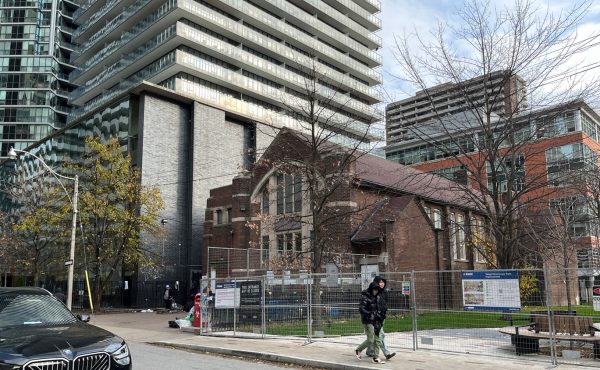

Spacing Saturday is a new feature that highlights posts from across Spacing’s blog network in Toronto, Montreal, Ottawa, and the Atlantic region. Spacing Saturday replaces the weekly features Montreal Monday and Toronto Tuesday.
![]()
• As one of Halifax’s central and most well-used public spaces, the Common development project has passions running high. Jayme Melrose uses the Commons Project as case study on the City of Halifax’s community consultation and collaboration process.
• Who really funds municipal campaigns? Spacing’s Andrew Harvey crunches the numbers from St. John’s 2009 municipal election and discovers some interesting answers.
![]()
• In light of Ottawa’s upcoming municipal election, Vicky Smallman looks to other cities for strategies on how to shake Ottawa out of its “electoral complacency”. Looking at Borough Councils in Montreal to proportional representation in Cambridge to term limits in Philadelphia Smallman argues “when we think about the kind of city we want…it’s useful to look at how other cities work – not just what kind of services and assets they have but how they make decisions and how they select their decision-makers”.
• Kate Wetherow writes on Ottawa’s “1% for public art” policy. The initiative, which requires every new Ottawa street redevelopment project to put 1% of the cost towards public art, is not widely known and is often ignored. But, as Wethrow finds, due to “the strength and persistence of Ottawa’s vocal community groups” the city is increasingly being held to its commitment. Ottawa’s public spaces are benefiting as a result.
![]()
• Alanah Heffez looks at a promising new development planned for downtown Montreal that could well become “a role model for sustainable building in Quebec”. The building, the Maison du Développement Durable, will be the first LEED Platinum certified commercial building in Québec and will house a diverse group of residents and projects. Funded by a collection of environmental and social justice nonprofits as well as by Hyrdro Quebec, the finished building will integrate commercial and office space with spaces for education and research, a daycare and an indoor public square.
• A plan for new bike path through the heart of Montreal leaves cyclists conflicted. As Spacing’s Alanah Heffez explains while the new east/west route (Bleury to Saint-Urbain street) is welcome there are questions about its practicality. The path will be paved with stone and will lack any clear demarcation. Heffez interviews a planner behind the project for perspective on the new path.
![]()
• Toronto’s Cabbagetown, known for it array of independent businesses, artistic community and Victorian homes has undergone a number of reincarnations over the years . Once one of Toronto’s poorest neighbourhoods its been gentrifying steadily since the 1970s. Spacing’s Ryan Bolton looks at neighbourhood change in one of the city’s oldest and most iconic neighbourhoods.
• A Milton, Ontario public school is taking a bold step to reduce cumbersome traffic around schools and rising rates of childhood obesity. Their solution—forcing student to walk. Robertson Elementary has banned parents from driving their children to school since January and boasts a 90-100% compliance rate.



